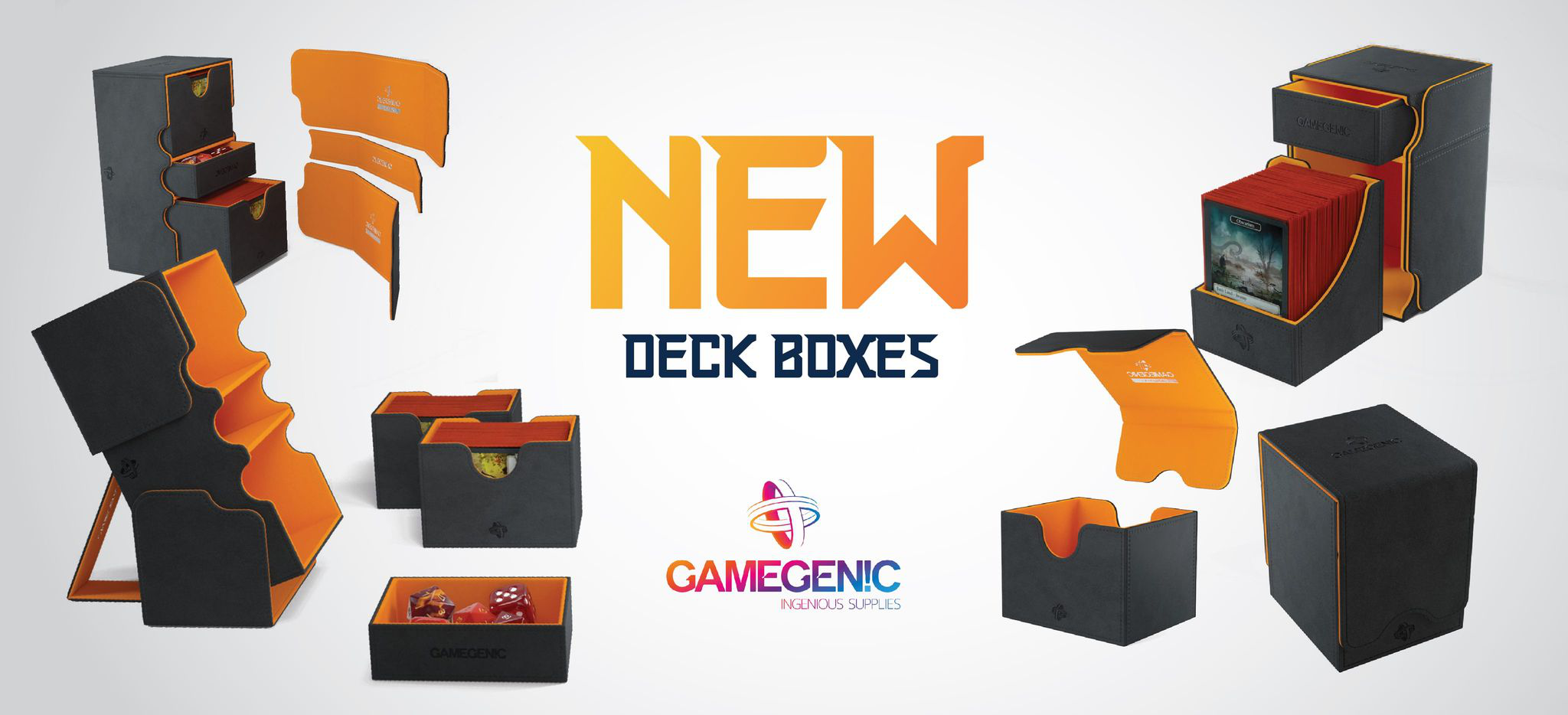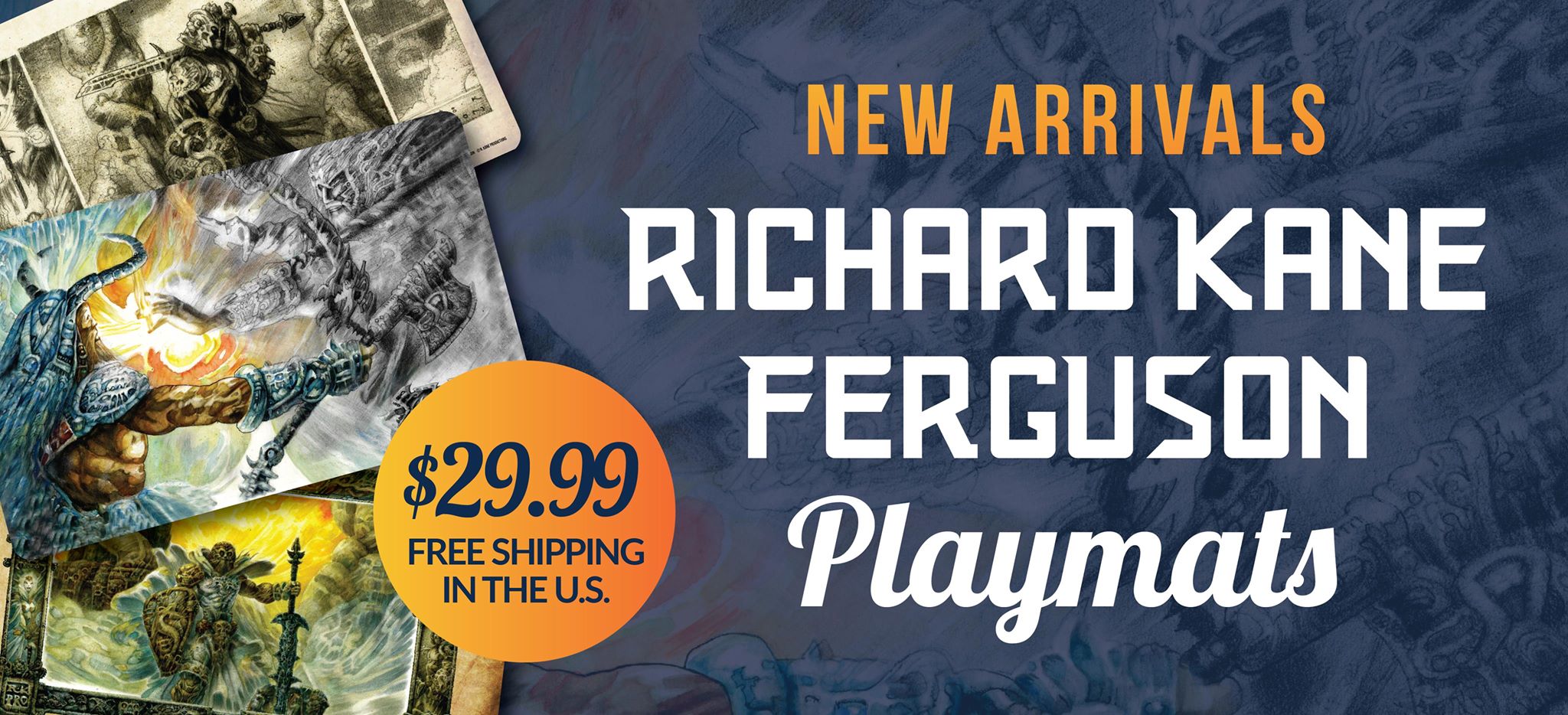Building a Commander Cube Part 4

“Magictating” is defined as getting into the zone with your Magic the Gathering collection--thinking, planning, organizing, reminiscing about past games, and imagining future games. It is a combination of hard thinking about the game and calm meditation, reveling in the joy it brings you.
Previous Article: Part 3
This is the final installment in my series on how to go about building an EDH/Commander Cube. Parts 1-3 dove into the theory, compilation, and actual record keeping for building an EDH/Commander Cube. This last installment is focused on what my current build of my personal EDH Cube looks like. I'll provide links to a Google Sheet of the cube and I'll also be discussing the overall archetypal choices I made. This is meant to help you kick start your own cube, and does not need to be taken as a definitive list that you must copy exactly. As we've discussed, there are many ways to build an EDH/Commander cube. I've spent well over one hundred hours developing, refining, playing, and writing about this cube. I love my EDH Cube. I'm proud of its progress, and I'm happy to share it with all of you. So, let's get into it!
https://docs.google.com/spreadsheets/d/1l6FRznQaIcY9ZPbP4q3_89Hk2sYbRbV5y68mYlCF2D4/edit?usp=sharing
Link to Tappedout.net list: https://tappedout.net/mtg-cube-drafts/edhnostalgia-cube/
Commanders





Well, it is an EDH/Commander cube. The commander choices I made were actually simple: only the 55 original legends from Legends would be available as your commanders. This choice had a ripple effect throughout my cube. It basically eliminates the need to support enemy color archetypes. The only way to have an enemy colors in your deck is to draft a tri-color legend; this means that you don't naturally have anyone playing two enemy colors together. The third color will always be present in enemy color builds, so I could simply try to support archetypes that cross-support one another despite being enemy colors. This sounds complex, but as you start working out the archetypes it actually lines up pretty easily.
Using those original EDH generals (the original name for commanders) from Legends also fixes two issues when creating a cube like this. If you want to avoid the draft good-stuff problem, then capping commander choices with three-color legends is a great way to do it. Furthermore, by using the original legendary creatures I managed to avoid something that makes constructed great, but becomes problematic in limited. Using legends that predate the existence of the format makes it so built-for-Commander legends like Gavi, Nest Warden, Zedruu, the Greathearted, or just about any other Commander Precon Legend you can think of, don't dictate the draft strategy. Instead of drafting a commander that tells me to draft cycling or populate or humans, we can make it so the drafter is more focused on building a synergistic deck that happens to have an interesting leader at the helm (if you're lucky enough). Making it so that there's “only” 24 options at the start of each four person draft also makes it so you do need to prioritize getting a shot at playing the colors you want. My highly restrictive choice to use the original 55 actually made building the cube out so much easier. Well, as easy as a 100+ hour project can be!
Archetype Support





I initially wanted to build at least three archetypes into each color and/or color pair. I wanted each color to have a tribal identity inspired from the original sets. So, I quickly landed on white angels, green elves, red dragons, black zombies, and blue clones? So, black was going to be vampires, because of Sengir Vampire, but vampires didn't offer enough cross synergy support for me to make it work as nicely as I wanted it to. So, I switched over to zombies during construction. As I started to build out the zombies I felt that they helped cross-synergize with other strategies amazingly well. This could all change as more sets are released and I adjust the cube, but supporting a tribe in a color is usually a fairly easy task. I say usually, because blue is a problem.
Initially, I thought clones would be pretty cool. I started by including plenty of cloning cards from Vesuvan Doppelganger and Clone to Identity Thief, but quickly realized that would mean blue would always be a dedicated support color. Or a support tribe. Every tribe gets better with blue, but no actual blue tribe would exist. The inability to draft blue as your primary color strategy seemed off to me. I didn't want a blue player to have to rely on other people's threats to be a force in a game. That felt wrong. I then thought merfolk would work. I honestly wanted drakes, but that's more a pet choice than a solid draft choice. Besides, with no Talrand, Sky Summoner in the cube, and no blue/green dedicated support it's pretty much impossible to adequately pull off drake support. Thus, blue boils down to merfolk, illusions, wizards, spirits, and sea monsters. Illusions suffer from many of the same downfalls that affect clones. Merfolk is tough, and after just one draft I was fairly certain they weren't going to make it as force in the EDH cube. They're usually small creatures, require you to go wide, and play as a more aggressive strategy. So, the merfolk got the boot.

I'm a huge fan of giant sea monsters and fish, and I do have a soft spot for Island Fish Jasconius. So, my second iteration began with switching blue's tribal identity to be more aligned with big cracking krakens and other such monsters. There's just enough support and payoff to be able to make sea monsters into blue's tribal identity. The problem was similar to vampires though—not enough cross over into other synergies. So, illusions seemed OK, but I was worried that might make the blue-white fliers theme entirely overpowered. Additionally, I looked more closely at wizards and realized they are the most versatile and diverse tribe offered. Leviathans and krakens were sent packing!
Wizards it was. Wizards offers enormous support in all the areas that blue represents—spells, counter spells, bounce, flying, and trickery. Wizards can also give off a nostalgic vibe—sweet! The additional upside is that wizards synergize with the blue/white blink archetype. I didn't even have all the wizards I wanted for the first spin with them, but the cards themselves gelled well in other synergies. I suspect that spirits could work, but I doubt I'll even give them a shot. I'm just so enamored by the multi-archetypal support that wizard cards offer. Wizards for the win!

This could all change in the future, but for now I'm very happy with it. The tribe on the shortlist to replace wizards is spirits, but that's a discussion to have after many more drafts and iterations of this cube. I suspect that spirits will push blue/white fliers into a zone that is perhaps overpowered, so I'll have to walk that line carefully. The goal is to try and cross support as many archetypes as possible with each card that gets included. Having the same card being used in different ways by different strategies is what helps to make a cube really fun to draft. When my buddy swipes the Walking Ballista I need for my +1/+1 counters deck, because he's got plans for it in his big mana ramp deck. That's why I'm constantly on the look for improvements that don't always mean making the most efficient game play choices, but rather the most effective drafting choices.
Supporting colors was also fairly easy as my commander choices clearly identified which color pairings would be good choices for archetypal supports. I wanted to have at least one major archetype supported by each friendly color pairing. I chose blue/white fliers, red/green beat-down, blue/black Reanimate, green/white counters, and black/red sacrifice. These goals end up crossing over into one another a little bit, and that's honestly ideal. The third color you add to any of these can often lead to a deck that has many cross synergies as well. It worked out rather nicely. I really have my commander colors to thank for this. I imagine that your restrictions may make things even easier if you land on commanders that specifically point people into these clear archetypes. However, that can also lead to “lazy” drafting where people pick a commander and then just take things that only go with that commander. Which can pay-off or become disastrous as well. Ultimately, supporting these color pairings and archetypes is dictated by your inclusion of viable commanders. You can't draft blue/white fliers if you don't have a blue/white commander in the draft. My cube doesn't specifically rely on someone having drafted a commander to enable their strategy, so in some ways it makes things a bit more flexible for the player. However, the cost of this is that I was restricted to which archetypes my cube can actually support—no blue/green value/ramp or black/white aristocrats.
Removal



Removal is something that I was constantly trying to keep available for each color. Some colors remove things better than others—black kills creatures, white wrecks enchantments, red blasts artifacts, and green gets to blow up fliers or artifacts or enchantments. Additionally, I didn't saturate the cube with mass removal. I included a few for each color or at least as close as I could manage. These effects should feel special, and I really didn't want someone drafting a miserable control deck that blows up the world over and over again. I'm not saying those decks aren't fun to play when you build them in constructed, but in my EDH cube they don't belong. I want people to deal with increasingly complex board states and have to balance attacks, tricks, and defenses. Now that I've said this, I'm sure I'll see someone build a brutal control deck just to spite me. One friend came fairly close once, but lacked enough sweepers to really be a true and powerful control deck. Whenever possible, I've been trying to swap out generic removal for things like Cruel Revival, Zombie Apocalypse, or Angel of Glory's Rise. Cruel Revival pushes an archetype while still acting as a piece of removal in a non-zombie deck. Zombie Apocalypse and Angel of Glory's Rise are just little dreams I have of how to make some big plays. The number of original legends are that incidentally human makes Angel of Glory's Rise a surprise sleeper for getting back any legends in the graveyard. I'm still searching for other elements as well. I'm fairly certain that Crib Swap should probably be included in the cube, as it is a powerful removal spell, but also counts as every creature type. Giving your opponent a shapeshifter in return also makes this weaker, and I like that. As I write this, I'm putting it in the short list of cards to add.

Don't feel like your cube needs to be perfect the first time out. I had a huge glaring error in mine that my buddy was more than happy to point out (thanks, Andrew). I had included Cabal Patriarch in the cube. I actually drafted it too, but didn't realize it was legendary until he pointed it out during the game. I totally missed it during construction. I just pulled it out and used it to support the sacrifice theme, and didn't even bat an eye. I promptly pulled it once I realized that would enable people to go mono-black with a dedicated archetypal commander no-less! That broke several of my rules and deviated from my goals. Sometimes we need the help, and by listening to your friends after drafts you can pick up on what changes you should shortlist and which ones you should keep an eye on.

Making changes is tough to track. I keep notes for mine. I keep these notes right in the cube box, so that I'm inspired to make the changes every time I pick it up. I love the idea of slowly improving your creations. I have had a “normal” cube for years, and it's a huge cube that is really well supported, but can be a beast to update. I find that I don't update it as often, because I only want to include cards that work within the confines of its established archetypes. This means that I only try to include cards that are strictly better. This is a fairly optimized cube. The only reason I mention this though is because your cube's improvements don't always line up with finding the most efficient cards. If they print a better Swords to Plowshares tomorrow I won't immediately replace some other piece of removal. Take Crib Swap as an example. It is arguably better in the cube than a Swords that simply exiles a creature for one mana. It creates a more interesting board state and synergizes really well with existing archetypes. Likewise, a removal spell that also creates +1/+1 counters like Swallow Whole is really bad. However, it also is really cool in a counters matter deck. These are the types of things you want to take notes on and create a short-list of inclusions.
Combat tricks should also feel exciting and special. I wanted to include them, but I didn't want to saturate the cube with them either. Combat can be pretty exciting, but if I'm already allowing the board states to build and usually remain fairly developed, then the blocking and attacking can do all the complicating for me. This is the goal, and it helps keep the game moving forward. Additionally, I chose to include quite a few monarch cards. I wanted to introduce the monarch to most games as early as possible. It really helps power a game along. The incremental damage that gets pushed out along with card draw is what powers a game to its finish. If people allow anyone to keep the monarch for too long, then that player usually puts an end to the game—despite being triple teamed. I'm not saying it's impossible to overcome or anything, because I've seen it happen. I managed to draw many extra cards, but the combined might of my opponents was enough to eventually chew through all my extra cards and kill me first. I think if you choose to include monarch cards that it is important you include some that give you monarch when they enter the battlefield. This helps decrease people's ability to run away with a game when they have a more developed board state. Snagging away monarch and then allowing it to pass around the table just moves the game along so much faster (in a positive way, and not a rushed or hurried manner).
Banned List



Banned cards are banned for a reason. When the reasoning didn't apply or I chose to ignore it, I included banned cards. Originally, I had Emrakul, the Aeons Torn in there along with Sundering Titan. I have fond memories of playing with both, but I was shown exactly how un-fun they are to play against by my buddy (Andrew). He managed to play both in a single game. Granted he hard cast Emrakul by tapping 15 lands (which is truly an amazing site), it still felt awful playing against it. He also drafted Upheaval in the same deck. I guess drafting all the banned cards is a decent strategy? Anyway, we discussed how the game played out, and we decided that Emrakul and Sundering Titan had to go. There really aren't too many ways to cheat them in, but enough exist to make it worth cutting them. Even having hard cast them, the disadvantage and virtually game-ending position they inflict on other players is the reason they just can't be in the cube. They're un-fun. I really like having banned cards in the cube, but that's just my way of getting a bit of thrill. I wish I could have included Prophet of Kruphix as well, but no blue green support. I honestly don't think Prophet would destroy a cube, but will really only create a situation where someone is now facing three on one odds. Meanwhile, some cards need to be watched over the long-term. I watched Emrakul get played once, and that was enough, but Recurring Nightmare has been a long-term watch. It's banned for a reason—it's the most difficult reanimation spell to interact with. I love the card, but it can ruin a game and also ruin a draft. I don't think I could ever pass that card. Even if I'm just hate-drafting that card, it still stinks. Meanwhile, I could imagine plenty of places where I would be able to pass Primeval Titan. Titan is great, but the lands in the cube are not broken. Ramping in the cube does not guarantee immediate victory. The advantage can be hard to overcome, but not insurmountable. However, that's what notes are for! Banned cards can lend drama and excitement to a game—so don't be shy trying out a few banned cards. I've had success with some and others have clearly been failures. Live and learn my friends!
You don't need to take my cube as the definitive version. I expect most people won't want to use the original legends in their cubes, but that's why we have our own creations. I really think that deciding your goals ahead of time and staying true to them will bring you a long way toward commanding your EDH cube. I have found this experiment to be very fulfilling. I am definitely looking forward to being able to continue drafting this cube and make adjustments to it as the years go by. I hope this experiment has inspired you to build your own EDH/Commander cube, and I hope that you found these approaches and thoughts to be helpful in shaping your own creation. Until next time, may your draft plans and your cubes be ever in your favor!










